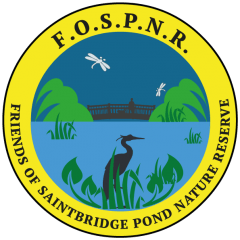
Rebirding: Restoring Britain’s Wildlife (Paperback) by Benedict Macdonald
Winner of the Wainwright Prize for Writing on Global Conservation 2020
Winner of the Richard Jefferies Society and White Horse Book Shop Literary Prize
Publisher: Pelagic Publishing
ISBN: 9781784272197
Number of pages: 336
Dimensions: 198 x 129 mm
Reviewed by
Paul Brunt – Friends of Saintbridge Pond resident ornithologist.
This book is based upon future conservation strategies regarding the concept of rewilding. Rewilding involves land management to bring back Britain’s wildlife that has been lost over the years. The book is an excellent read and explores the concept of bringing back wild animals such as the Lynx, Elk and birds such as the Turtle Dove and Dalmation Pelican – which is extinct as a breeding bird.
 Red Kite
Red Kite
https://www.woodlandtrust.org.uk/trees-woods-and-wildlife/animals/birds/red-kite/
The book highlights the successful reintroduction of the Red Kite to England as an example of how rewilding can be successful. Land use in Britain can be managed in a way that can restore Britain’s wildlife to the benefit of the rural economy by the expansion of ecotourism. People will spend money in order to see, for example, iconic birds such as the White-Tailed Eagle as highlighted by the successful reintroduction of this species into the Western Isles of Scotland, which has boosted the local economy for example the B&B and catering trade.

White-tailed Eagle
https://www.albiontimes.co.uk/british-white-tailed-eagles-return-to-england-after-240-years/
On a Local Level…
The book explores how messy areas provide good habitat for birds, and more wildflowers have meant more pollinating insects, which in turn provides more food for birdlife. ‘Ecological Tidiness Disorder’ is a term used to describe the order and clearance of messy areas to make an area more aesthetically pleasing to the eye.
The conservation strategy of Saintbridge Pond has led to a healthy population of starlings and House sparrows which have declined in other sites elsewhere and on a national level. Good cover by the reed beds supports scarce birds such as the Water Rail and provides an excellent habitat for birds on a suburban housing estate.



